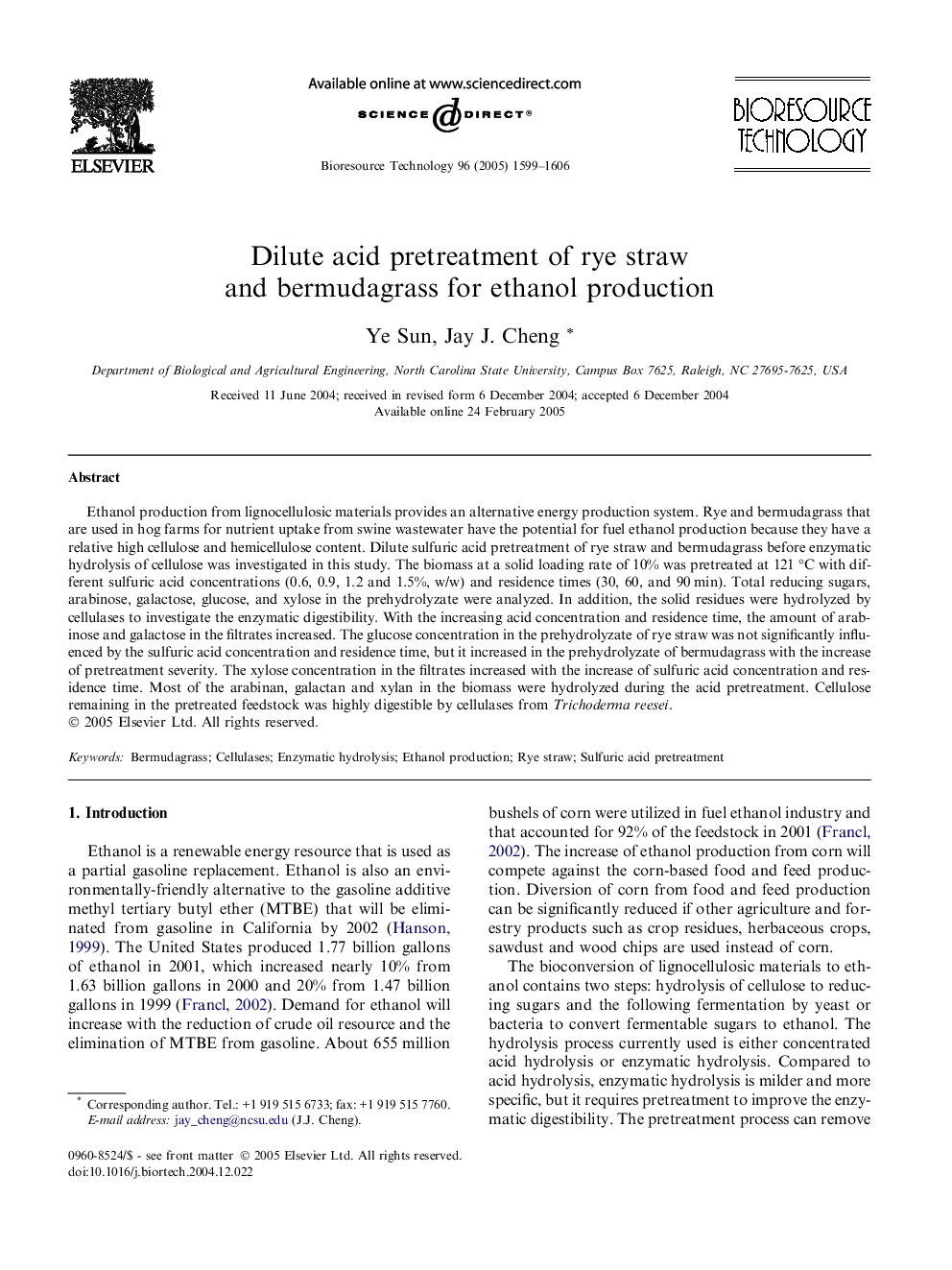| Article ID | Journal | Published Year | Pages | File Type |
|---|---|---|---|---|
| 10395692 | Bioresource Technology | 2005 | 8 Pages |
Abstract
Ethanol production from lignocellulosic materials provides an alternative energy production system. Rye and bermudagrass that are used in hog farms for nutrient uptake from swine wastewater have the potential for fuel ethanol production because they have a relative high cellulose and hemicellulose content. Dilute sulfuric acid pretreatment of rye straw and bermudagrass before enzymatic hydrolysis of cellulose was investigated in this study. The biomass at a solid loading rate of 10% was pretreated at 121 °C with different sulfuric acid concentrations (0.6, 0.9, 1.2 and 1.5%, w/w) and residence times (30, 60, and 90 min). Total reducing sugars, arabinose, galactose, glucose, and xylose in the prehydrolyzate were analyzed. In addition, the solid residues were hydrolyzed by cellulases to investigate the enzymatic digestibility. With the increasing acid concentration and residence time, the amount of arabinose and galactose in the filtrates increased. The glucose concentration in the prehydrolyzate of rye straw was not significantly influenced by the sulfuric acid concentration and residence time, but it increased in the prehydrolyzate of bermudagrass with the increase of pretreatment severity. The xylose concentration in the filtrates increased with the increase of sulfuric acid concentration and residence time. Most of the arabinan, galactan and xylan in the biomass were hydrolyzed during the acid pretreatment. Cellulose remaining in the pretreated feedstock was highly digestible by cellulases from Trichoderma reesei.
Related Topics
Physical Sciences and Engineering
Chemical Engineering
Process Chemistry and Technology
Authors
Ye Sun, Jay J. Cheng,
